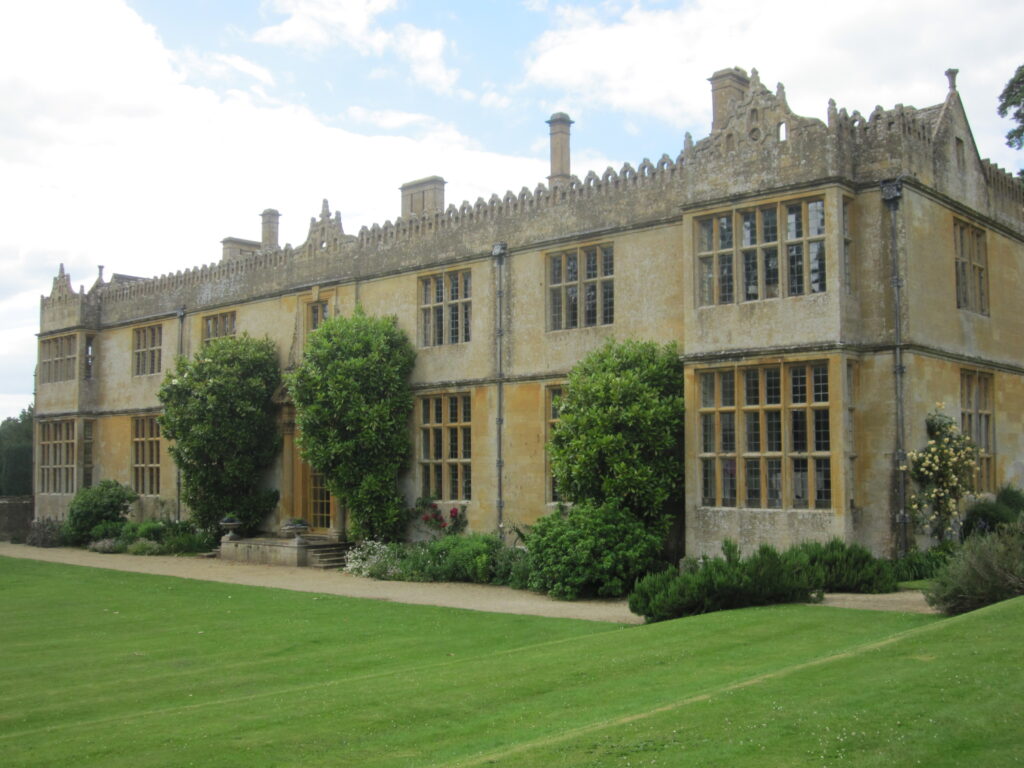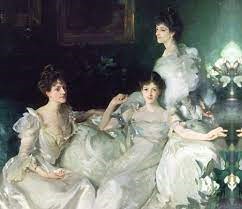A talk by local historian, Ailsa Fortune, was held on 18th January 2024 at the Holy Trinity Church, Church Road, Haddington.
The following is a precis of her talk:
Mary Constance Wyndham (left in the above portrait) was born in Belgravia in 1862 to a wealthy, well connected Victorian family of noble stock. One of five siblings she was the eldest of three sisters, the subjects of the John Singer Sargent portrait of 1899. They were brought up in a liberal, romantic milieu, and epitomised the gilded aristocracy of late Victorian and Edwardian England, a lifestyle essentially swept away by the First World War. Loving, affectionate parents helped the intelligent Mary to develop into a confident young woman with a profound sense of her own worth which characterised her whole life. It is of interest that the John Singer Sargent portrait (see above), dubbed ‘The Three Graces’ by the Prince of Wales, captures the elegance and beauty of Mary and her sisters, the serenity of whom conceals the turbulent lives they led, as another label, ‘Those Wild Wyndhams’, suggests. (For more biographical details, use the following link).
All were popular English society hostesses, and members of The Souls – a very exclusive social and intellectual circle of friends, which included Arthur Balfour and Wilfrid Blunt among its male members. Although a circle of intelligent people, only a few Souls, including Mary Wyndham and Arthur Balfour could be considered intellectuals.
Mary’s marriage to Hugo Charteris, Lord Elcho, in 1883, was arranged by her parents despite her pleas against the match. Charteris had a well-known reputation as a womaniser and gambler, qualities he sustained par excellence after the marriage.

Thus, Mary became mistress of the Charteris family seat of Gosford House in East Lothian. Styled Lady Elcho at first, eventually Mary became Countess of Wemyss and March when her husband inherited the Earldoms – 11th Earl of Wemyss and 7th Earl of March – on the death of his father in 1914. Between 1884 and 1902 they produced seven children to whom she was an attentive and affectionate mother while remaining a popular and widely known society hostess. Beyond family, she was determined to continue her intellectual life with the Souls, which had profound consequences for her relationships. Mary was very generous financially to several local projects in East Lothian, including her donation of £1000 for the building of Roodlands Hospital, and gave her support to the development of the Scottish Women’s Rural Institute after its foundation at Longniddry in 1917. Over this period Mary contended with the tragic loss of one son, who died young, and two of her remaining sons who were killed in action during the First World War.
Hugo Charteris remained an inveterate philanderer, and gambler on the stock exchange. Mary, however, was not a put-upon cuckold in this story. Affairs were as much a feature of the Souls as were its intellectual pursuits, and Mary certainly indulged in a least one which was ‘consummated’. In the early 1890s she had an affair Wilfrid Blunt, with whom she spent some time in Egypt, and bore him an illegitimate daughter. She and Hugo agreed to conceal the child’s parentage. Hugo is reputed to have had many affairs. One was with the Duchess of Leinster who allegedly bore him a son. However, he was officially considered to be fathered by her husband, Gerald Fitzgerald, Duke of Leinster, and he was brought up as part of that family. The Duchess of Leinster died of TB in 1895 and was ‘succeeded’ in Hugo’s affections by Lady Angela Forbes, a somewhat feisty woman who became known as a ‘forces sweetheart’ in the Great War.
By 1912 she was ensconced at Gosford with Hugo, while Mary chose to live at Stanway in Gloucestershire. After the war Hugo attempted to run Gosford House as an hotel with Lady Forbes as manager. Throughout, Mary and Hugo remained married.

Mary’s affair with Wilfrid Blunt was, arguably, a fly by night relationship compared with her 40 year friendship with Arthur Balfour of Whittinghame. Balfour was a successful politician, serving Conservative and coalition governments from the late Victorian period until after the First World War, most notably as Prime Minister in the conservative administration of 1902-1905. Thus, Mary was not only a prominent member of the aristocracy at the forefront of British society, she was also at the heart of political power. Her correspondence with Balfour over the long years of their friendship has been subject to close scrutiny to try and establish precisely what kind of relationship they had. Much of the correspondence from both reveals that they took immense pleasure from the times they spent together. Based on a hint of something physical in Mary’s letters it has been suggested that she and Balfour were lovers, but the jury is still out on this one. What seems beyond doubt is that Mary would happily have embarked on an affair had Balfour offered any encouragement. At the very least Mary loved Balfour and saw him as a true soulmate.

Arthur Balfour died in 1930. Mary survived him, dying in April 1937, but not her husband who died 3 months later.
In summary we can conclude that Mary had a fulfilled, albeit turbulent, life, in which she wholly merited the consensus of opinion in her lifetime that she was an exemplar of equality between women and men.
For further information:
‘The Letters of Arthur Balfour and Lady Elcho 1881-1917’ Edited by Jane Ridley and Clayre Percy
‘Those Wild Wyndhams: Three Sisters at the Heart of Power’ by Claudia Renton
—oo000oo—
Peter Ramage (with much help from John Revuelta and Marie Macpherson)

You must be logged in to post a comment.